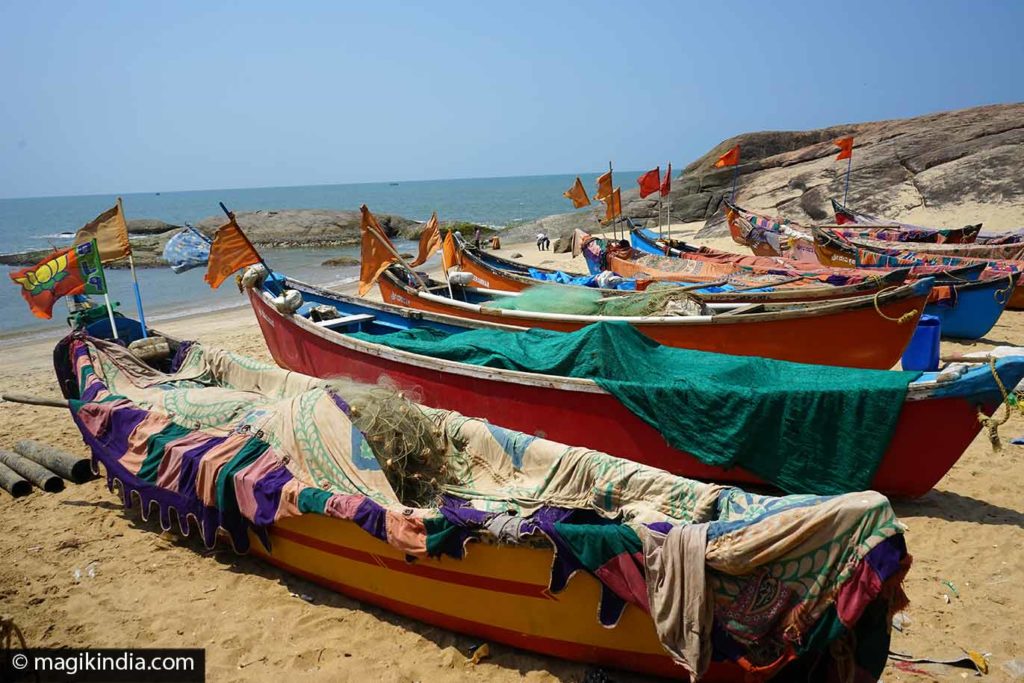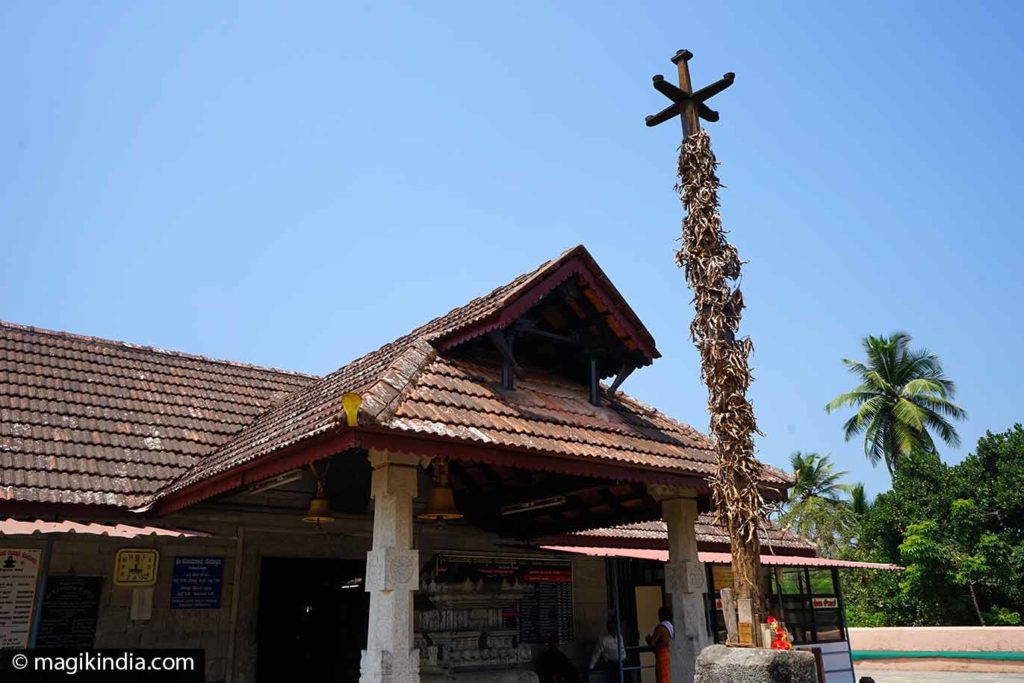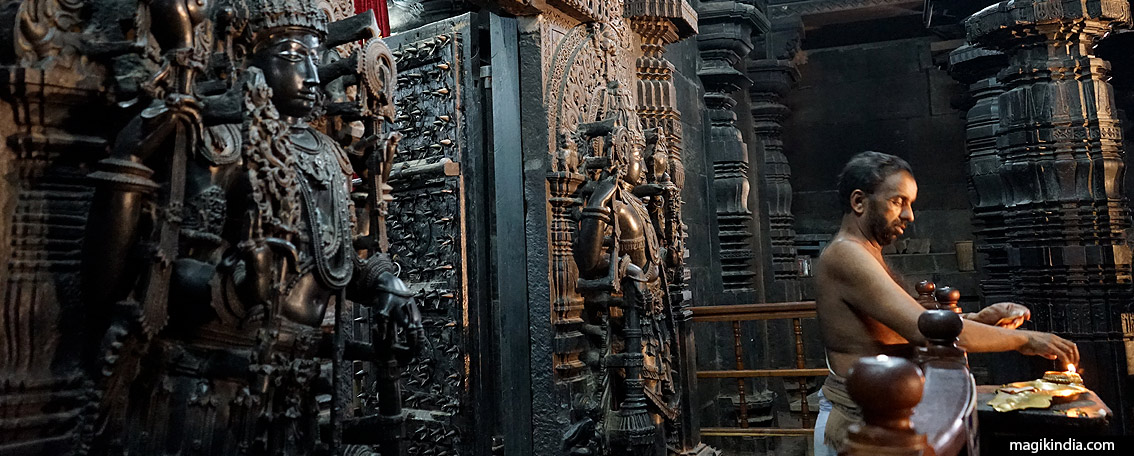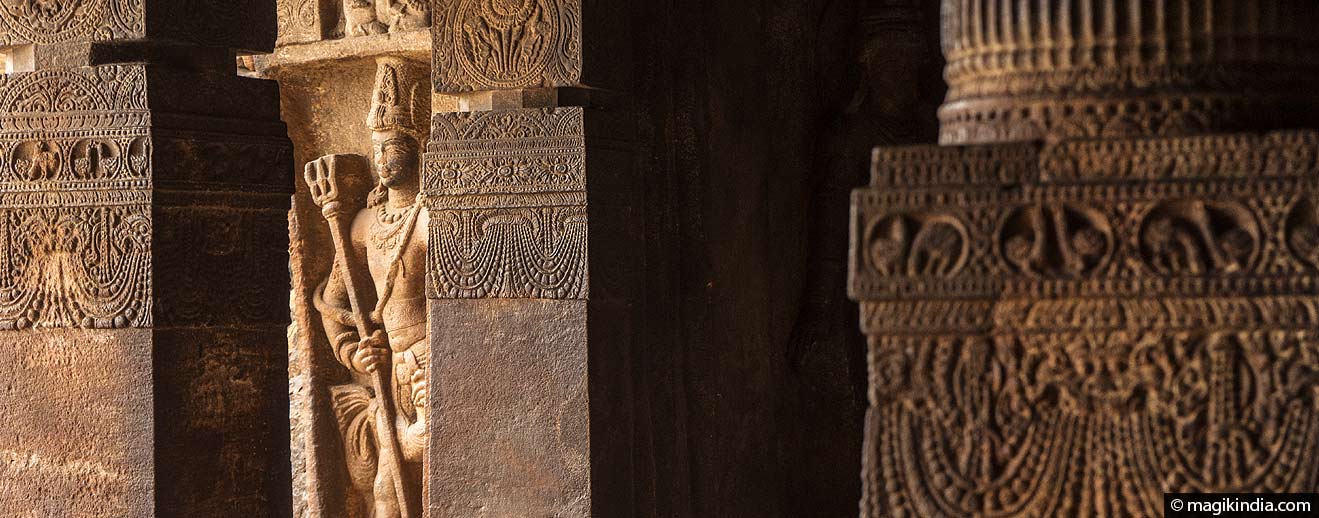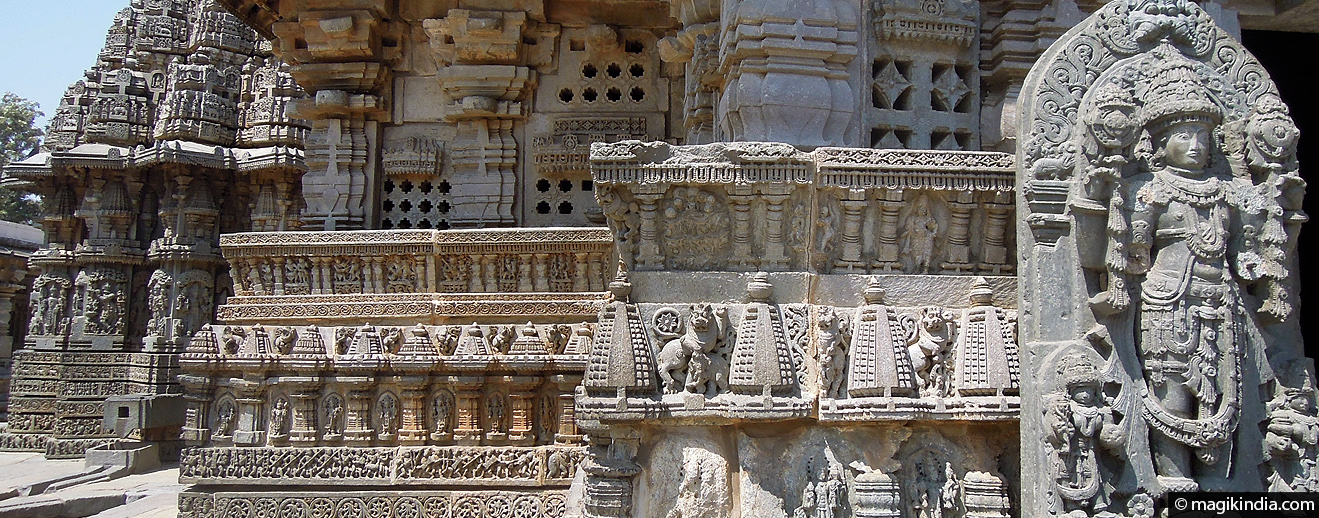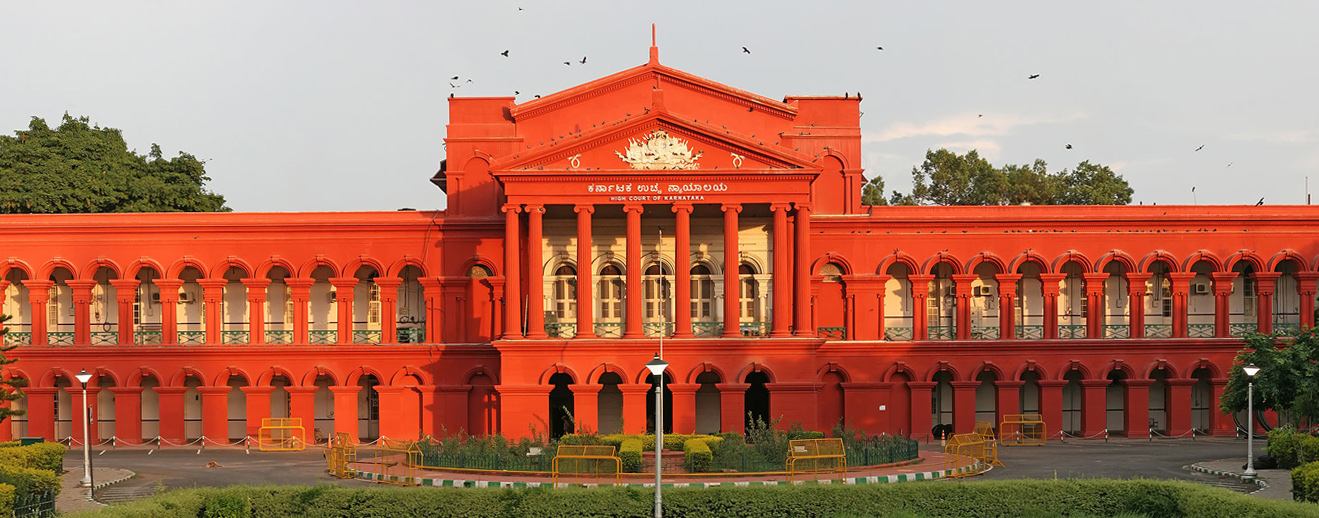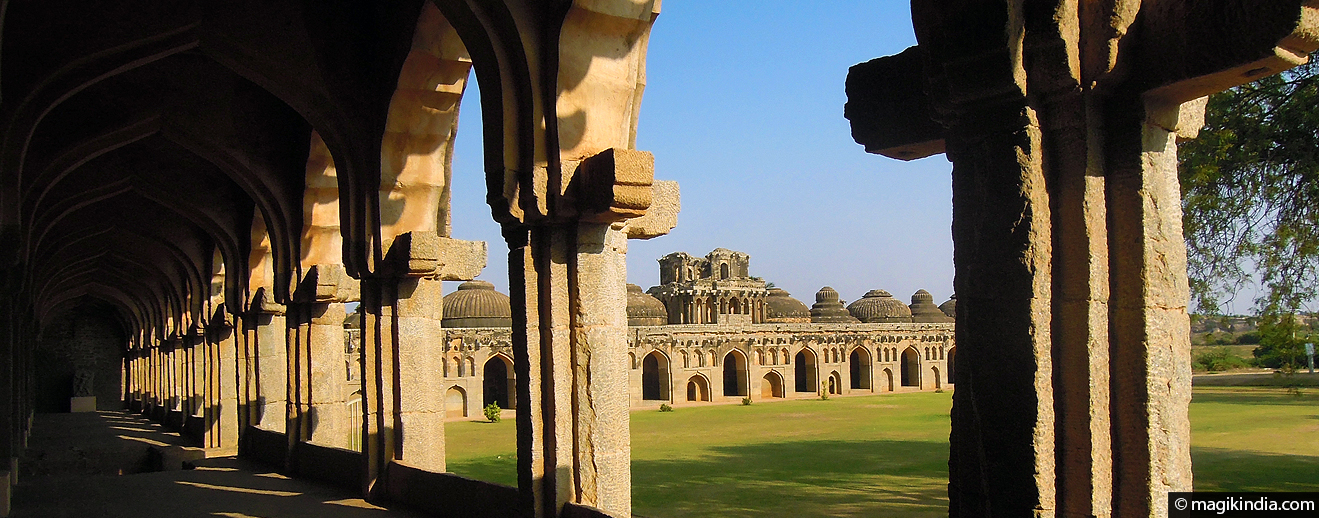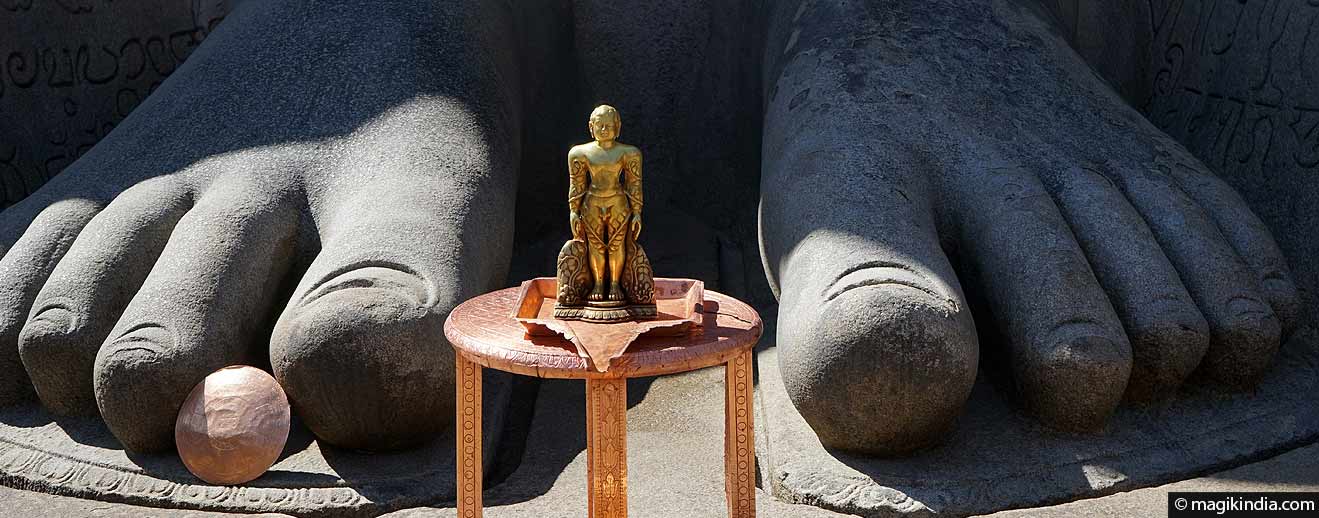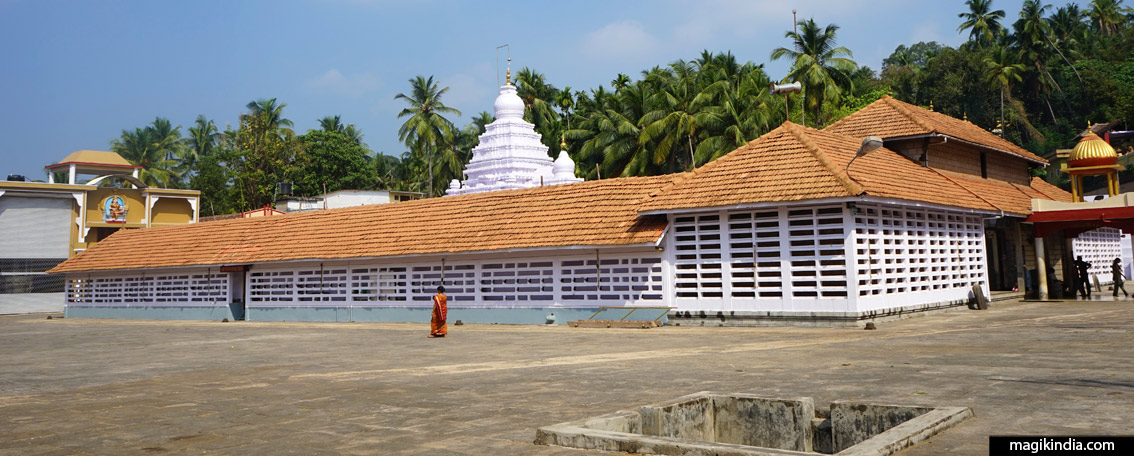
Mangaluru (Mangalore), city of the Mangaladevi goddess
Mangaluru is a port city on the Arabian Sea. Much of India’s coffee output leaves from here. The town’s main attractions are its ancient temples, luxuriant vegetation and golden sands – a foretaste of neighbouring Kerala.
Mangalore (or Mangaluru) is a busy port city exporting coffee and cashew nuts. It is home to a large Catholic community whose origins go back to the arrival of the Portuguese in 1526.
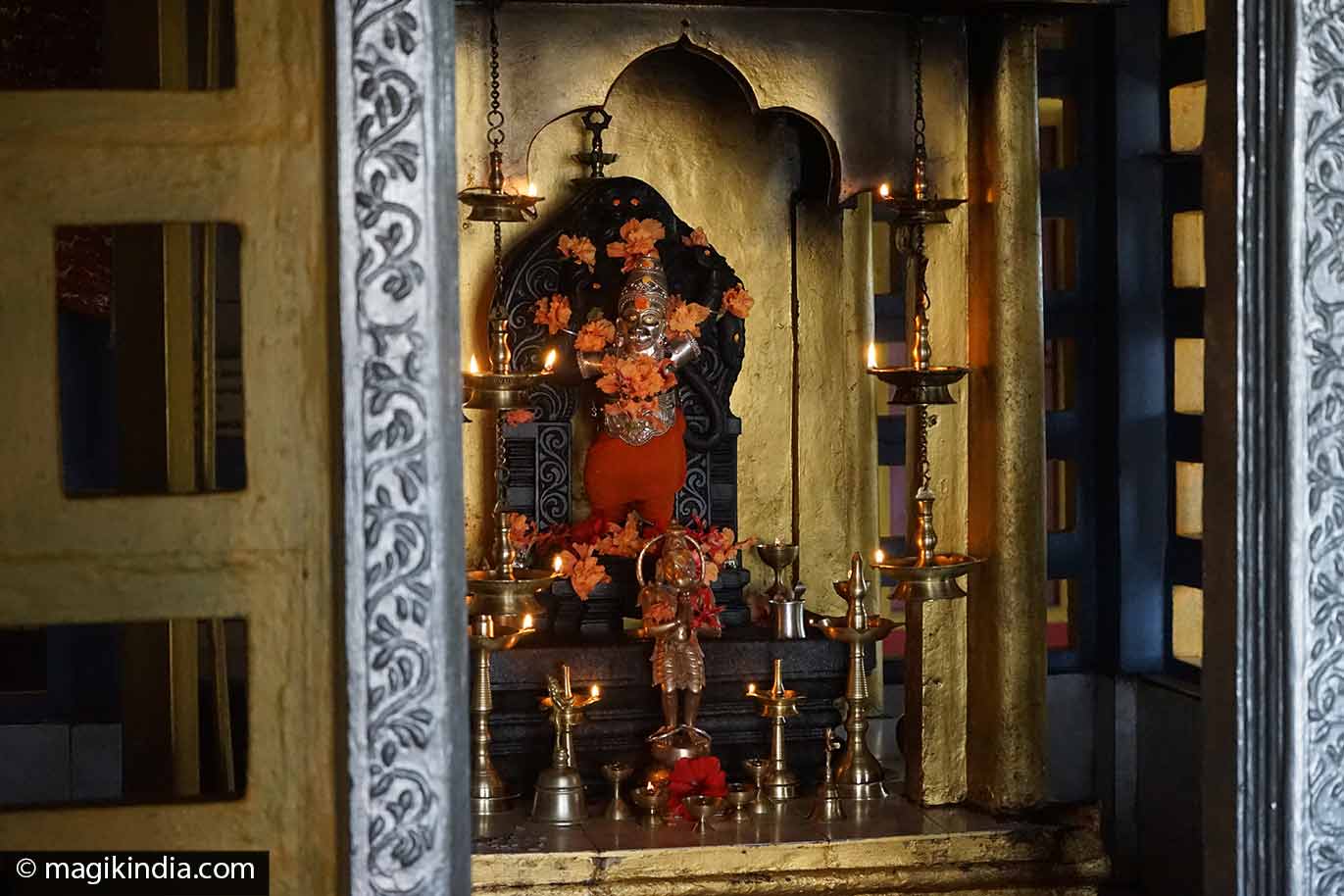
Mangaluru is named after the Hindu goddess Mangaladevi, deity of the Mangaladevi temple. A local legend tells that a Malabar princess called Parimala or Premaladevi gave up her kingdom to become a disciple of Matsyendranath, founder of the Nath tradition. She was given the name of Mangaladevi. She fell ill and died near Bolar in Mangalore and a temple was dedicated to her.
And now, let’s visit Mangaluru!
Kadri Manjunath Temple***
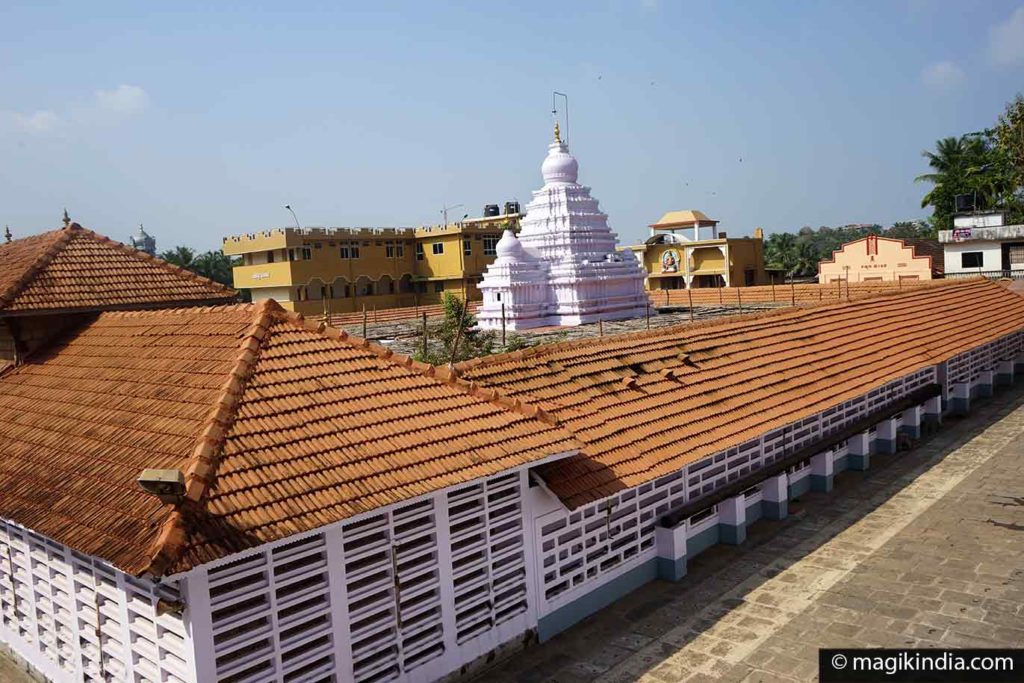
Manjunatheshwara temple, dedicated to the Hindu god Shiva, stands on Kadri Hill. It is said to have been built during the 10th and 11th centuries. The bronze idol of Manjunathaswamy is said to be one of the oldest in South India.
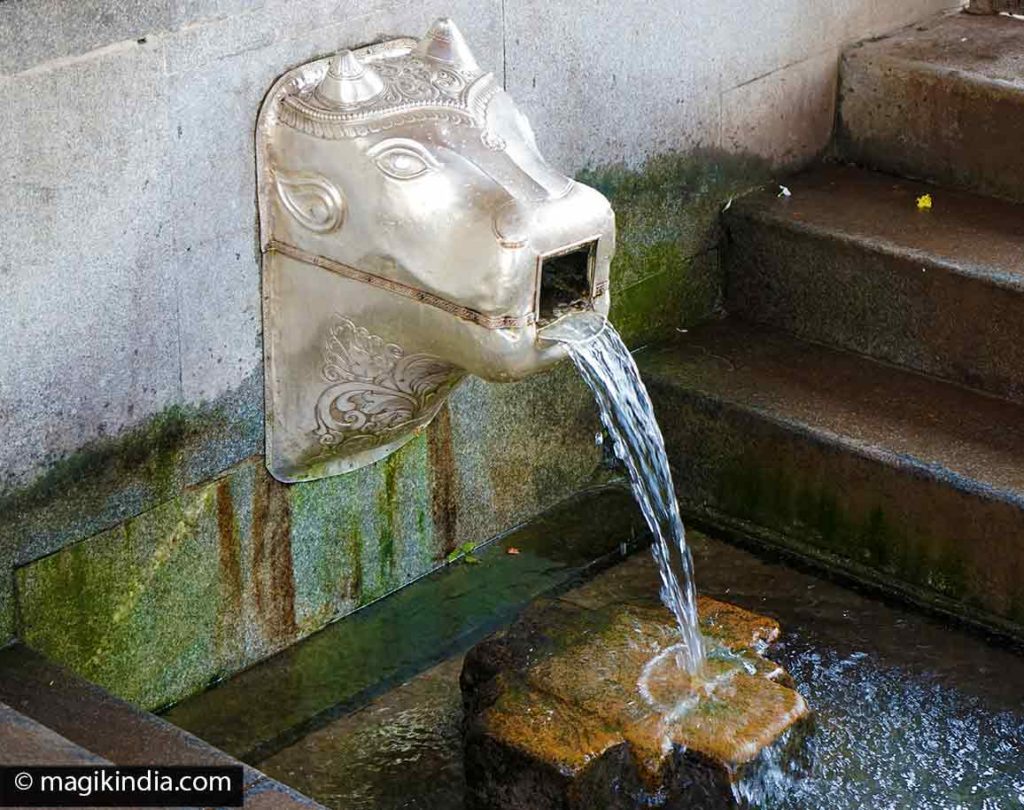
Around the temple are several other shrines to gods including Ganesh, Vishnu, the goddess Durgaparmeshwari, the god Shasta and the sage Vyasa Muni.
Opposite the temple and a little higher up there is a garden with seven tanks. The tanks are fed by a natural spring flowing from a cavern. Worshippers come here to perform their ablutions before going into the temple.
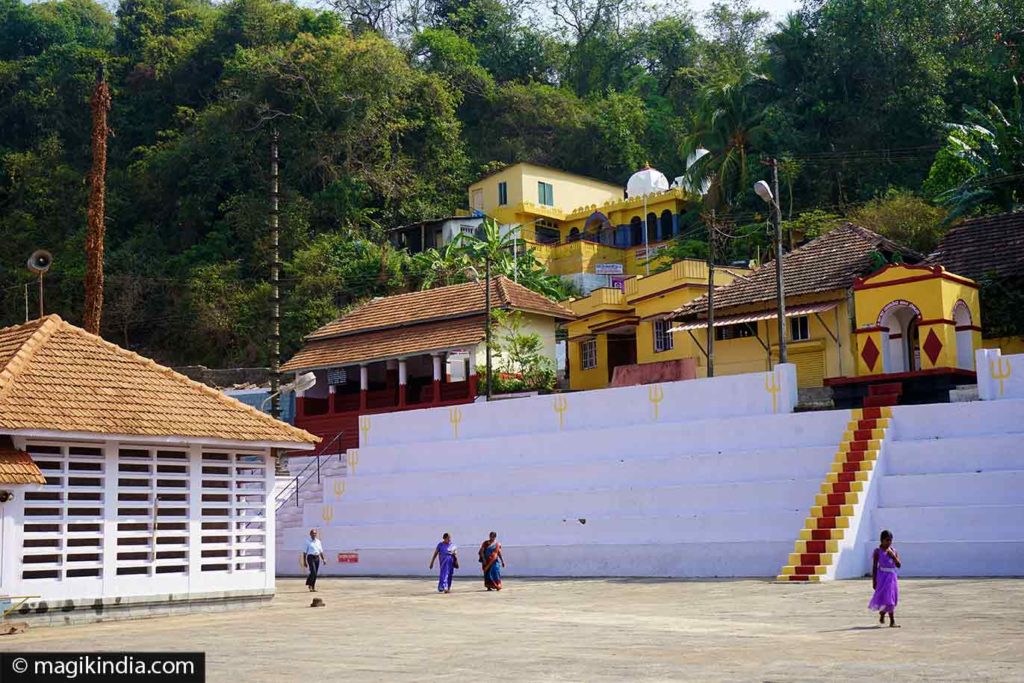
Climbing the steps up Kadri Hill, you can see a temple to the monkey god Hanuman and a giant statue of the god.
A little higher up there’s the Shri Yogeshwar Mutt (see below).
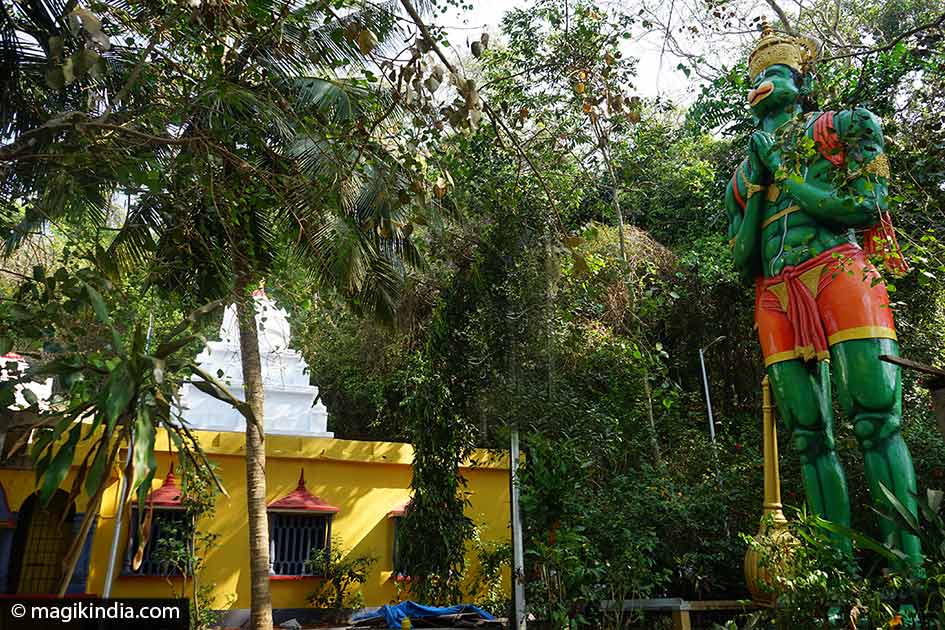
Shri Yogeshwar Mutt**
Sri Yogeshwar Mutt on Kadri Hill was founded by Yogi Matsyendranath of the Nath tradition.
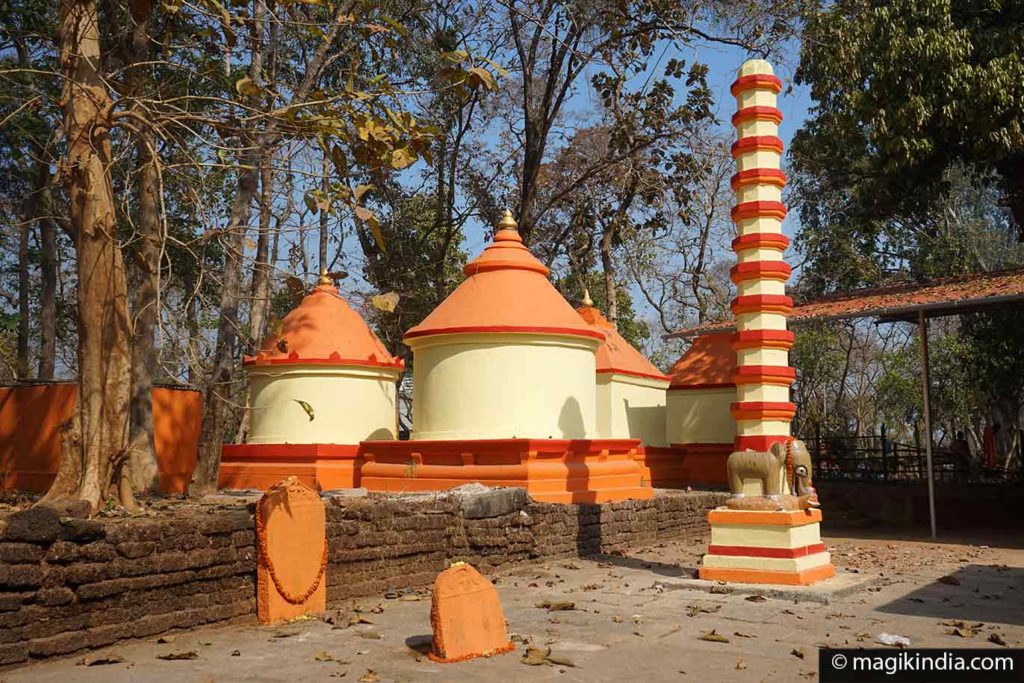
The natha or natha yogis are members of a Shivaite religious and philosophical order. They follow the tantric yoga tradition based entirely on transmission from master to disciple. Nath means “one who conveys” a teaching.
Near the Yogeshwar Mutt is a cave where the Pandavas are said to have hidden when they went into exile to escape from the Kauravas.
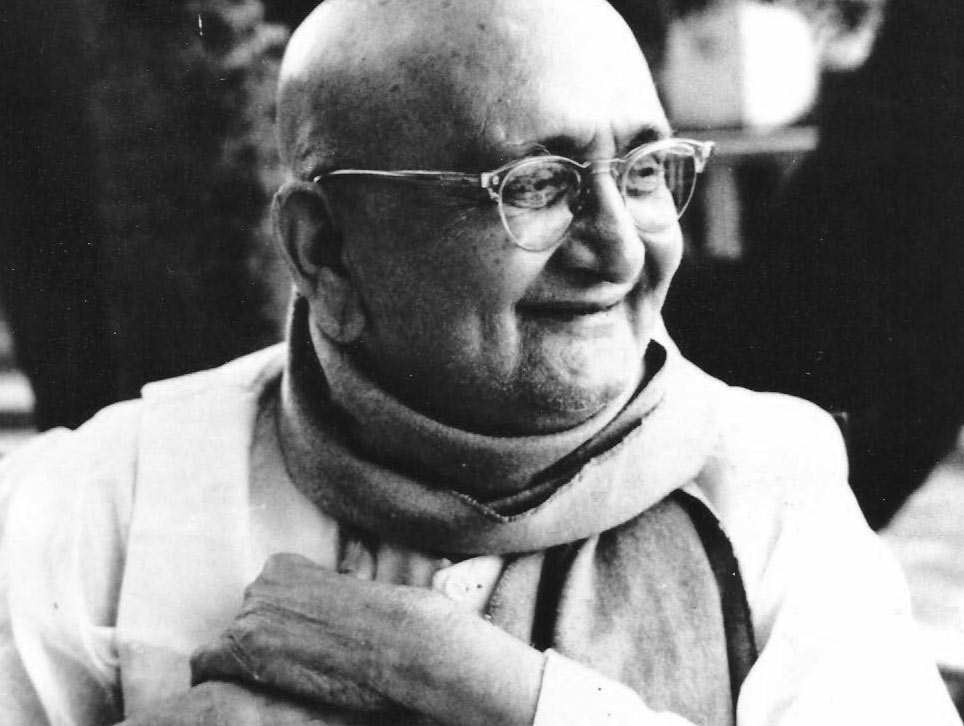
Swami Ramdas (1884-1963), founder of the Anandashram in Kerala and considered as a saint, stayed in this cave for three months in 1924, at the end of his one-year pilgrimage through all of India. It was here that he experienced nirvikalpa samadhi, immersion in divine consciousness, after a period of intense spiritual practice. His famous book In Quest of God was written while he was staying in the cave.
Kodial Sri Venkataraman Temple**
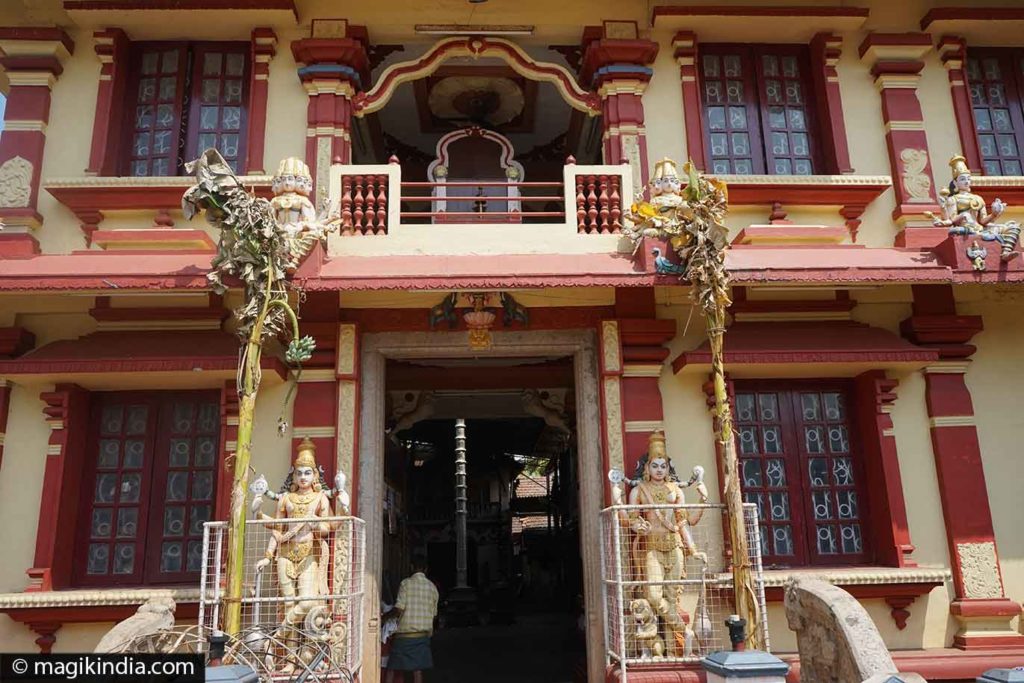
Kodial Sri Venkataramana temple is dedicated to Venkataramana, an incarnation of the Hindu god Vishnu.
It was built in the 17th century and has ever since belonged to the Gowd Saraswat community of Brahmins. The temple follows the Madhwa Vaishnava tradition professed by Sri Madhwacharya, which regards Lord Vishnu as the Supreme Brahman and Lord of the Universe.
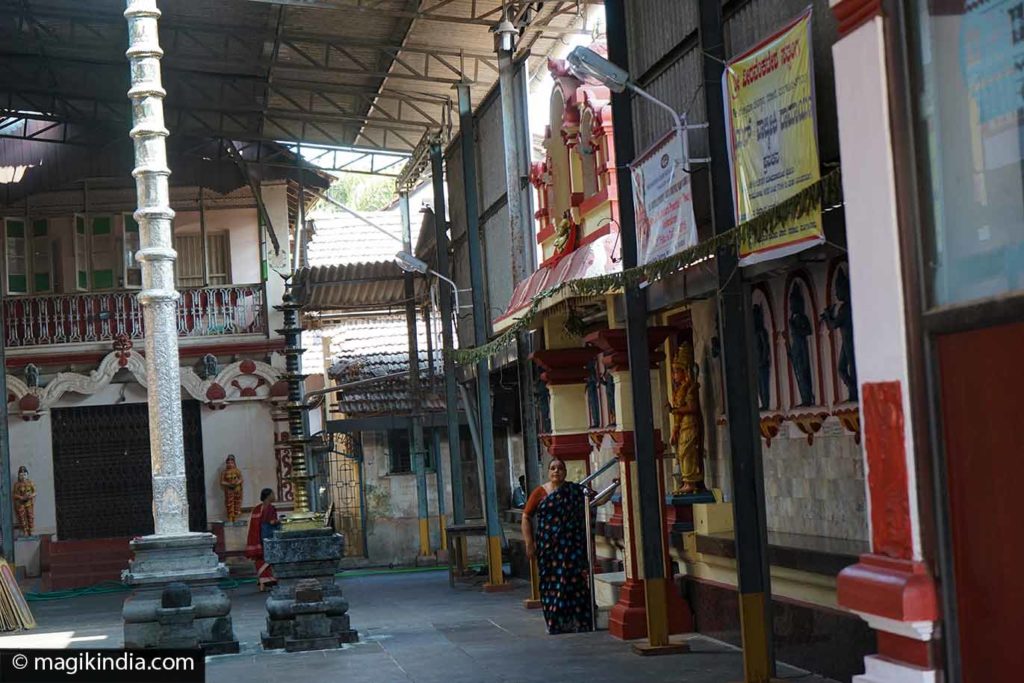
The temple’s main event is its annual six-day chariot (or car) festival, which attracts thousands of celebrants. The Hindu holy scriptures describe the human body as a chariot, and the soul as the deity driving the chariot. The soul, or wisdom, acts on the body to control destructive thoughts.
=> Venkatarama temple
Kudroli Gokarnath Temple***
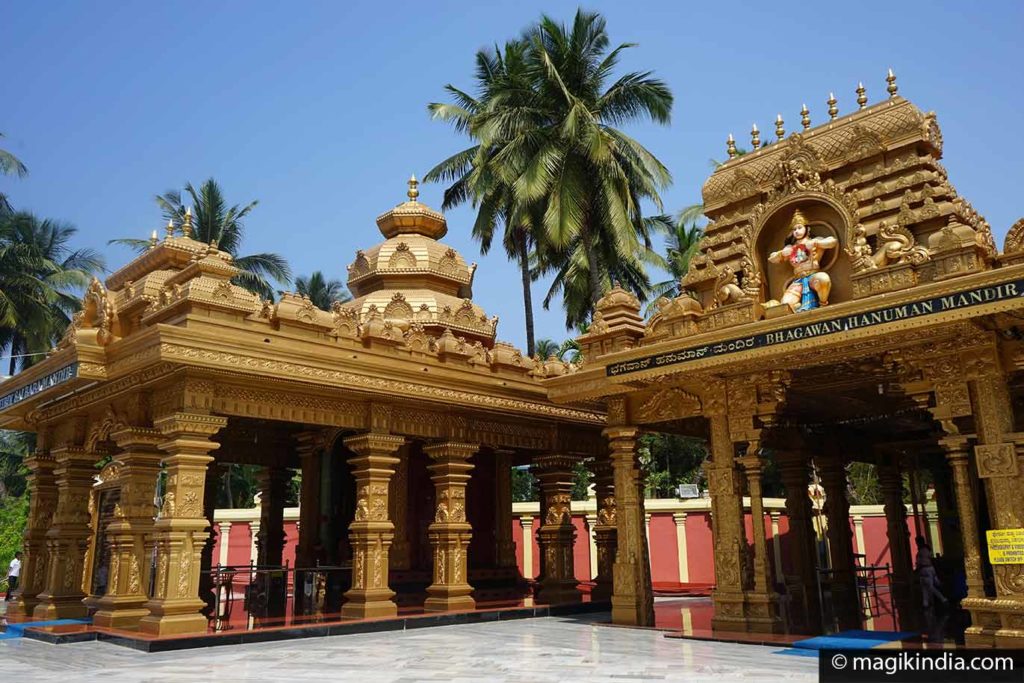
The red and gold Kudroli Gorakhnath temple complex was built in 1912 at the instigation of Sri Narayana Guru. It is dedicated to Shiva and was built for the Billava community.
The Billava are an ethnic group who traditionally lived in Karnataka and parts of Kerala, and who mainly do farm work.
They are traditionally considered untouchables. Narayana Guru was a social visionary and a defender of the oppressed, fighting against the caste system.
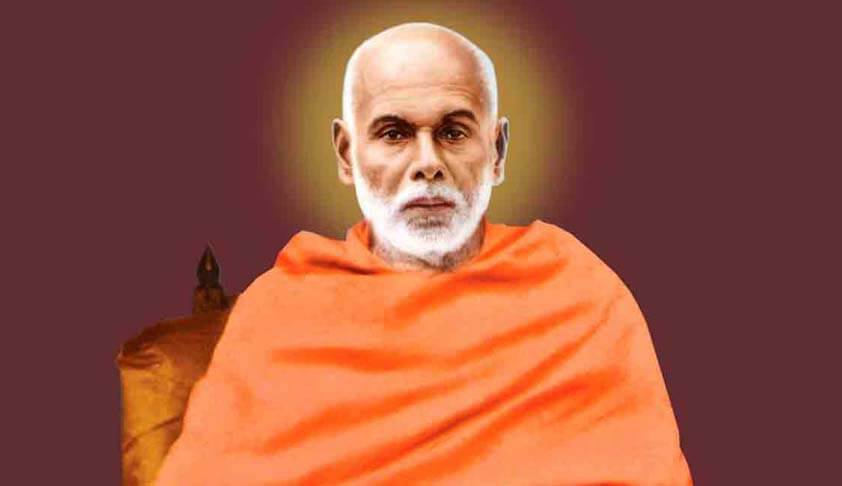
In India, the “untouchables” or Dalits are a category of people who are excluded from the caste system and are treated with great contempt. They have to do the most degrading and badly-paid jobs and are quite simply considered ritually impure. Since India became independent (in 1947) it has been forbidden by the Constitution to regard a person as untouchable. There are thought to be still about 170 million such people, though they are now generally called Dalits, which means “the oppressed”.
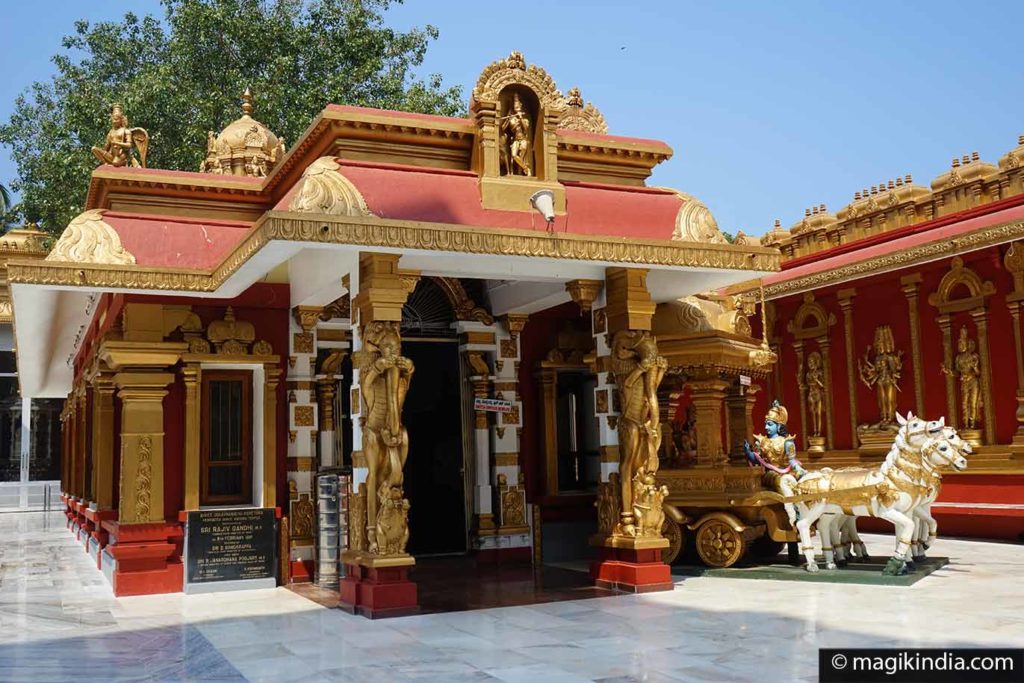
Mangaladevi Temple (3km)***
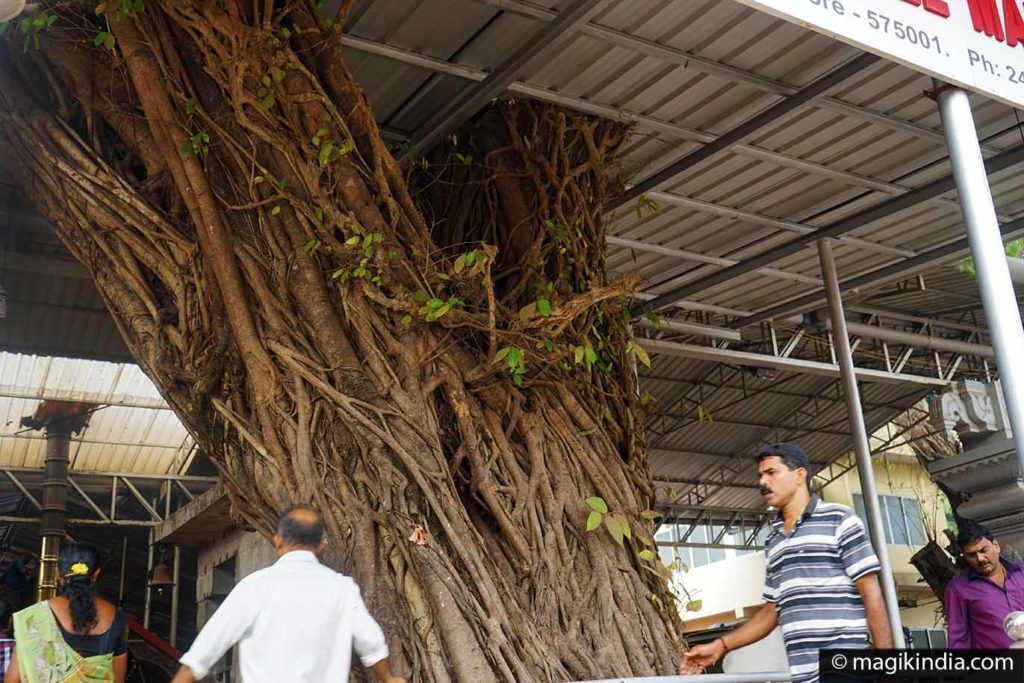
Mangaladevi temple is at Bolar, 3km from Mangaluru. According to legend, Mangalore town was named after Mangaladevi, the goddess of this temple.
The temple is said to have been built in the 10th century in memory of a princess who was a disciple of Yogi Matsyendranath, an important yogi of the Nath tradition. She was given the name Mangaladevi.
Someshwara Temple and Beach (17km)***
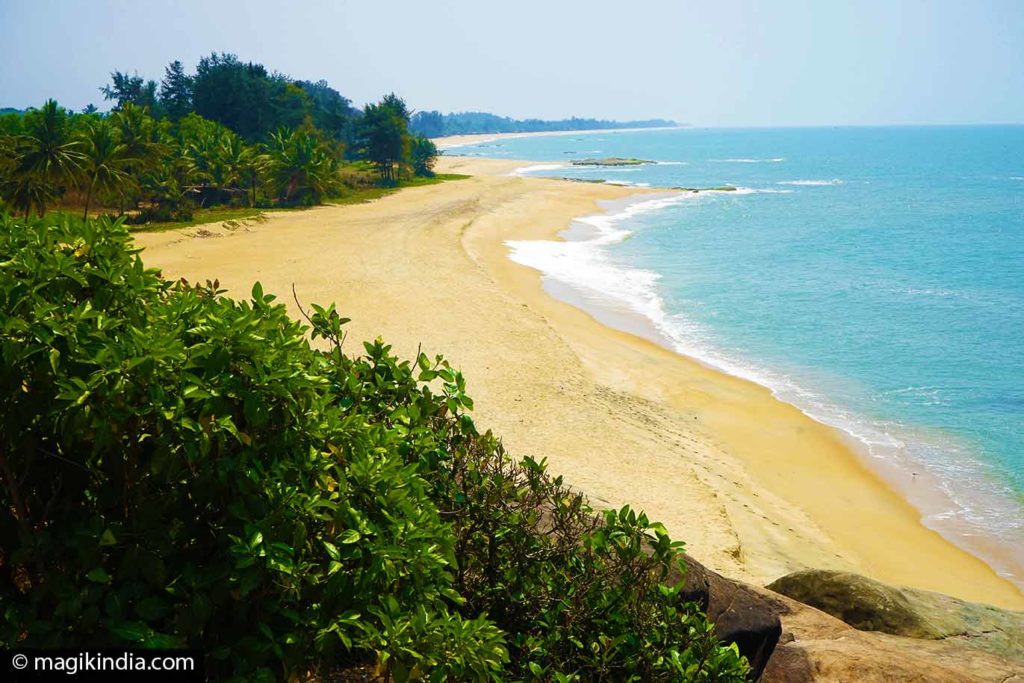
Someshwara is a superb beach of fine sand near the towns of Byndoor and Ullal, 9km from Mangaluru.
Above the beach stands the 300-year-old Somanatha temple dedicated to the Hindu god Shiva. As well as a peaceful atmosphere, it offers a magnificent panoramic view of the coast.
